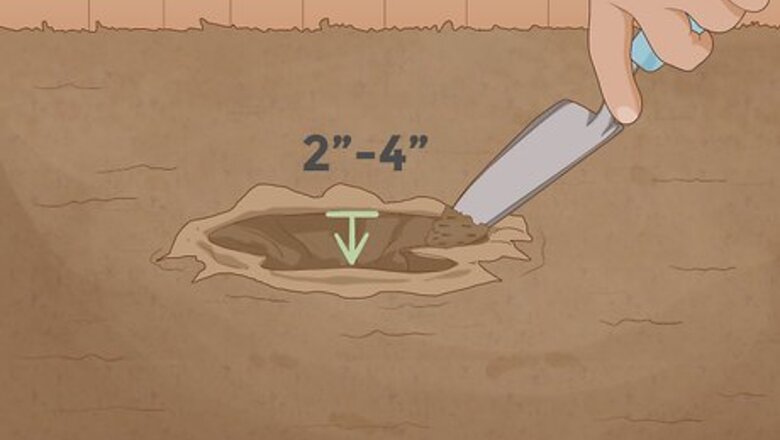
views
Testing Soil pH with a Commercial Test Probe
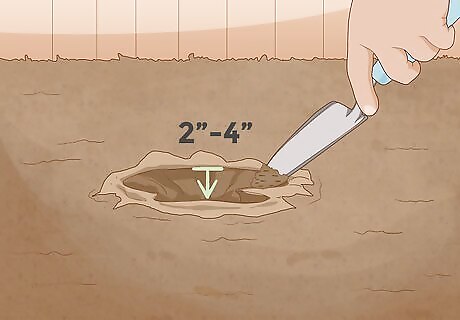
Dig a small hole in the soil. Use a trowel or spade to dig a hole 2–4 inches (5.1–10.2 cm) deep. Break up the soil within the hole and remove any twigs or foreign debris.
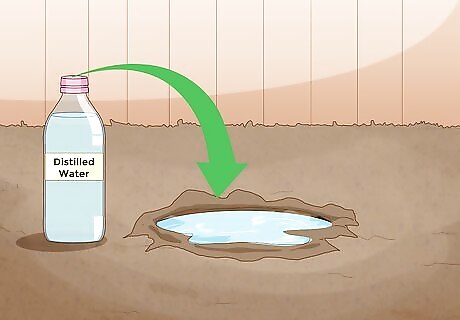
Fill the hole with water. Use distilled (not spring) water. You can find this in your local pharmacy. Rainwater is slightly acidic, and bottled or tap water tends to be slightly alkaline. Fill the hole until you have a muddy pool at the bottom.
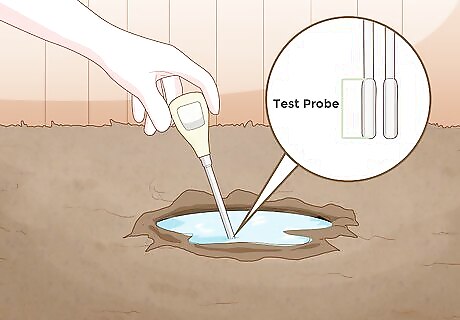
Insert the test probe into the mud. Make sure your tester is clean and calibrated (for a more exact measurement). Wipe the probe with a tissue or clean cloth, and insert it into the mud.
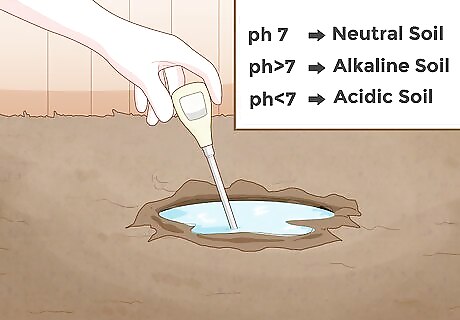
Hold it there for 60 seconds and take a reading. pH is usually measured on a scale of 1-14, though the tester may not include this entire range. A pH of 7 indicates neutral soil. A pH above 7 indicates alkaline soil. A pH below 7 indicates acidic soil.
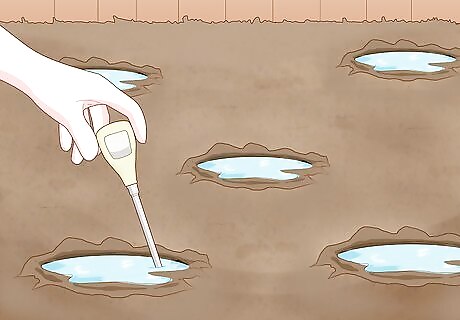
Take several measurements in different spots in the garden. A single reading may be an anomaly, so it's good to get an idea of the average pH in a plot. If they're all around the same, take the average and amend the soil accordingly. If one spot is very different than the rest, however, you may need to "spot treat" it.
Using Paper Test Strips

Purchase pH test strips. Test strips, also known as litmus paper, are a quick and easy way to measure the pH of your soil. You can purchase them online or at your local garden store.
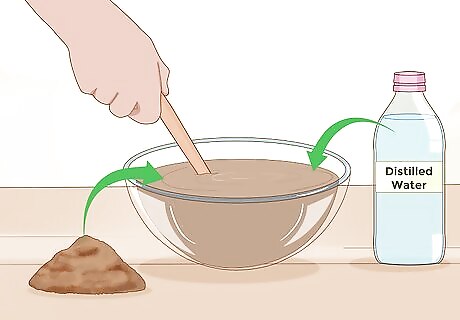
Mix a handful of soil with room-temperature distilled water. Take a handful of the soil you'd like to test and put it in a bowl. Then, pour some distilled water into the bowl until the dirt is the consistency of a milkshake. You can give the mixture a stir to ensure the water is fully incorporated.
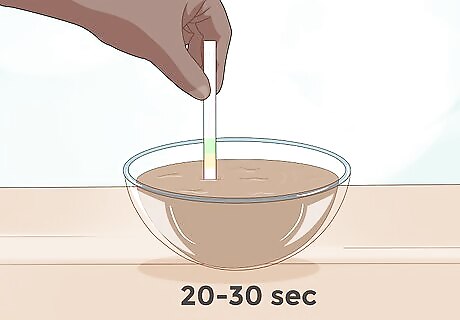
Dip a pH test strip in the mixture for 20-30 seconds. Holding your pH test strip at the non-reading end, dip the strip into the dirt mixture for 20-30 seconds. This test time can vary, so consult the directions on your specific test strips to determine the proper dipping time. When the test time is up, lift the pH strip from the water, and dip it briefly in distilled water to clean off the dirt.
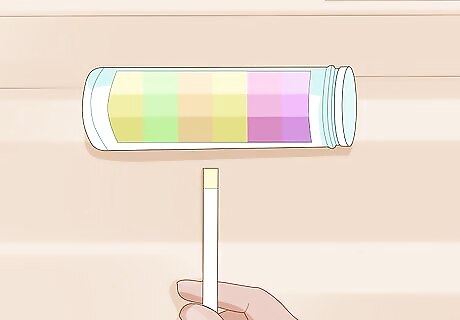
Compare your pH strip to the test kit's key. Use the key included in your pH test kit to read the pH of your soil. Normally this key is color-coded. Compare your strip to the colors available, and select the one that most resembles your result. The key will equate this color with the pH number of your soil.
Changing Your Soil pH
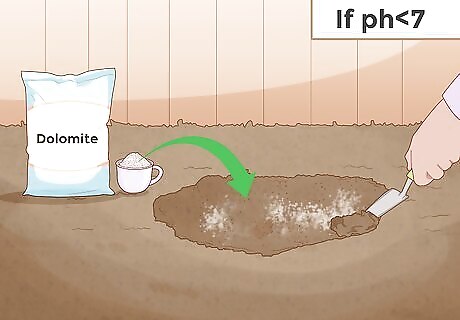
Make your soil less acidic. If your soil pH tested below 7, add a cup of dolomite or quick lime to the soil. Mix well, then retest with your probe. Use this method to slowly change the pH of your soil. Wood ash in moderation helps as well. Both are available at local gardening centers. Follow the advice in your commercial test probe kit to determine how much of these substances you will need to add to achieve the desired pH. If you need to change your soil pH level more than one full point, contact a local gardening professional. They can help you calibrate your soil so it can be amended most successfully.
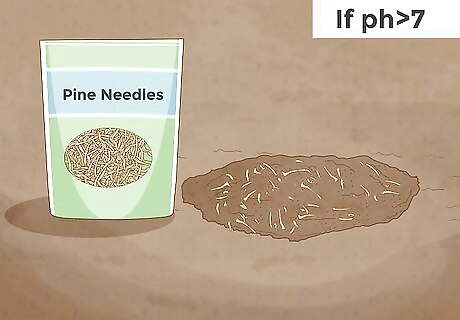
Make your soil less alkaline. If your soil pH tested above 7, add a cup of organic matter, such as pine needles, peat moss, or decomposed tree leaves. Then, retest the soil to gauge the new pH. Add additional cups, testing as necessary, until you reach the desired level. Sulfur is very effective as well. Use the instructions in your commercial test probe kit to determine how much of these additives you will need to add to achieve your desired pH. If your soil needs to be adjusted more than a full pH point, contact a local gardening or landscaping professional. They can help you calibrate your soil to the right level through an on-site evaluation.
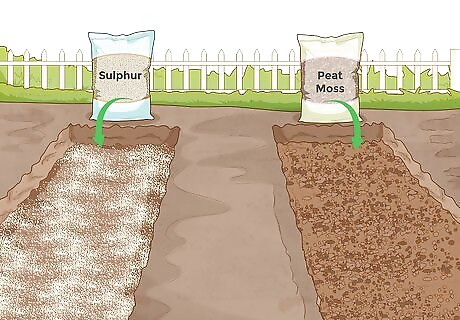
Change your soil pH to suit specific plants. For example, add sulfur to a certain area of your garden to encourage beautiful blue blooms on your hydrangeas, which prefer more acidic soils. The pH of your soil does not need to be uniform your entire garden over; feel free to alter it to support different plants. You can consult the Old Farmer's Almanac to determine the best pH for your particular garden. Some plants prefer a pH of 7 while some fruits favor a lower pH.


















Comments
0 comment